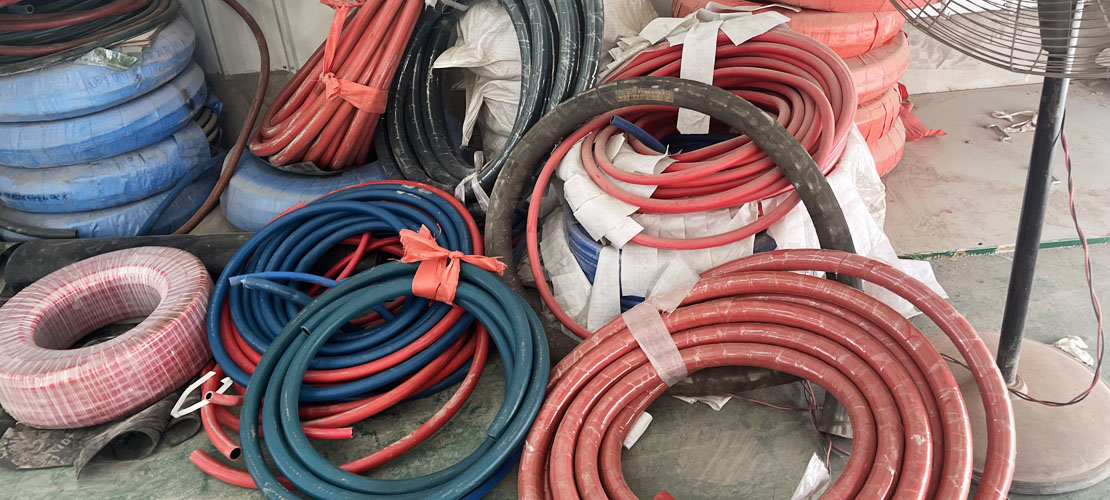Jul. 03, 2025

The core principle of water-cooled cables for medium-frequency furnaces is to achieve efficient heat dissipation through circulating cooling water. When the medium-frequency furnace is running, the high-frequency electric field causes the conductor resistance to heat up, especially when transmitting large currents (up to more than 10 times the input current, for example, the cable current peak of a 500KW medium-frequency furnace can reach 11000A), which is difficult for traditional cables to withstand. Water-cooled cables use the high heat capacity and heat transfer coefficient of water to introduce coolants (such as distilled water or desalted water) into the internal or external flow channels of the cable, absorb heat through forced circulation, and circulate after cooling by a heat exchanger to form a closed-loop heat dissipation system. This design not only reduces the conductor temperature, but also prevents the cable from aging or fusing due to overheating, ensuring long-term and stable operation of the equipment.
Water-cooled cable for medium-frequency furnace consists of two parts:
Conductor: usually multi-strand copper stranded wire with large cross-sectional area is used. The more strands, the softer the cable, but the higher the cost. Some designs adopt hollow conductor structure and directly pass water for cooling.
Shielding layer and insulation layer: used to prevent electromagnetic interference and current leakage, usually made of high-temperature resistant materials (such as silicone rubber).
Sheath: The outer layer is composed of corrosion-resistant, flame-retardant high-quality rubber or high-voltage resistant casing.
Includes waterways embedded in the outside of the cable or integrated in the conductor. Some designs use spiral waterways to optimize the water flow path.
Accessories include electrode connectors, stainless steel hoops (such as 1Cr18Ni9Ti material) and sealing clamps to ensure high pressure resistance and water leakage.
A forced circulation water cooling system is adopted, and the main process is as follows:
1. Coolant delivery: The water pump pushes the cooling water to the cable head, directly contacts the heating conductor through the flow channel, and absorbs heat.
2. Heat exchange: The cooling water after absorbing heat returns to the radiator or cooling tower through the loop, and is cooled by air cooling or liquid cooling to form a continuous cycle.
3. Water quality requirements: Desalted water or distilled water must be used to avoid ordinary water scaling and clogging the flow channel.
The water circuit system consists of the following core components:
1. Water tank: Store cooling water, usually equipped with liquid level sensor and water quality filter.
2. Water pump: Provide power to drive water flow, which is required to be corrosion-resistant and have adjustable flow.
3. Control system: Real-time monitoring of water pressure, flow and temperature, automatic adjustment of water volume and activation of protection mechanisms (such as water shortage alarm).
4. Radiator: Enhance heat dissipation efficiency and reduce the temperature rise of the cooling water circuit.
Some advanced designs use a dual-circuit cooling system to improve reliability and cooling efficiency by separating the main and auxiliary water circuits.
Mechanical failure: The flexible connection of the cable breaks due to frequent bending or twisting.
Waterway blockage: Scale or impurity accumulation causes flow rate drop or even local overheating.
Seal failure: Loose or aging clamps cause water leakage, threatening insulation performance.
Regular maintenance: Clean the water circuit, replace seals, and check the tightness of the electrode.
Process improvement: Use stainless steel clamps and high-temperature resistant sealants to enhance sealing.
Redundant design: Add backup pumps and cooling towers to ensure that the system can still operate in the event of local failures.
1. Efficient heat dissipation: The heat capacity of water is 4 times that of air, which significantly reduces the temperature rise of the conductor and is suitable for high current conditions^.
2. Compact design: The integrated water circuit makes the volume smaller than the air-cooled system, simplifying the equipment layout.
3. Energy saving and environmental protection: Reduce fan energy consumption, while cooling water can be recycled to reduce resource consumption.
4. High reliability: High temperature resistant materials and multi-strand twisted wire design extend service life and adapt to frequent mobile working conditions.
The medium frequency furnace water-cooled cable solves the heat dissipation problem under high current working conditions through innovative water circuit and conductor integrated design, combining high efficiency, reliability and environmental protection. Its core technology lies in the precise control of the cooling system and the selection of high temperature resistant materials. The future development direction may focus on intelligent monitoring (such as real-time feedback of the Internet of Things) and higher strength composite material applications.
Latest News
Latest Products
Customized metallurgical machinery and equipment range: Electric Arc Furnace, Submerged Arc Furnace, LF Refining Furnace, Vacuum Furnace, Induction Furnace, Dust Remove System, Water Treatment Equipment, etc. Providing the most advanced equipment integration services, metallurgical equipment can be customized according to different needs of customers, and production capacity can be adjusted according to customer requirements.
Electric Arc Furnace
Submerged Arc Furnace
LF Refining Furnace
VD / VOD Vacuum Refining Furnace
Induction Furnace
Furnace Accessories
Navigation
E-mail: anna@srfurnace.com
Tel: +86 159 2955 5868
WhatsApp: +86 159 2955 5868
Add:
Room 102, Building 7A, Free Trade Xintiandi, Fengdong Avenue, Fengdong New Town, Xi'an City, Shaanxi Province
